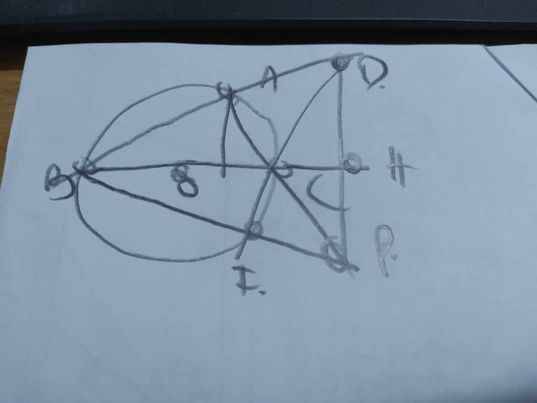Cho tam giác nhọn ABC nội tiếp đường tròn (O). Hai đường cao BD vàCE cắt nhau tại H
a) Chứng minh tứ giác BEDC nội tiếp.
b) Chứng minh tg ADE đồng dạng với tgABC.
C) Tia AH cắt (O) tại K. Gọi Q là giao điểm của KD với (O)Chứng minh BQ đi qua trung điểm DE




a: Xét tứ giác BEDC có \(\widehat{BEC}=\widehat{BDC}=90^0\)
nên BEDC là tứ giác nội tiếp
b: Ta có: BEDC là tứ giác nội tiếp
=>\(\widehat{BED}+\widehat{BCD}=180^0\)
mà \(\widehat{BED}+\widehat{AED}=180^0\)(hai góc kề bù)
nên \(\widehat{AED}=\widehat{ACB}\)
Xét ΔAED và ΔACB có
\(\widehat{AED}=\widehat{ACB}\)
\(\widehat{EAD}\) chung
Do đó: ΔAED~ΔACB